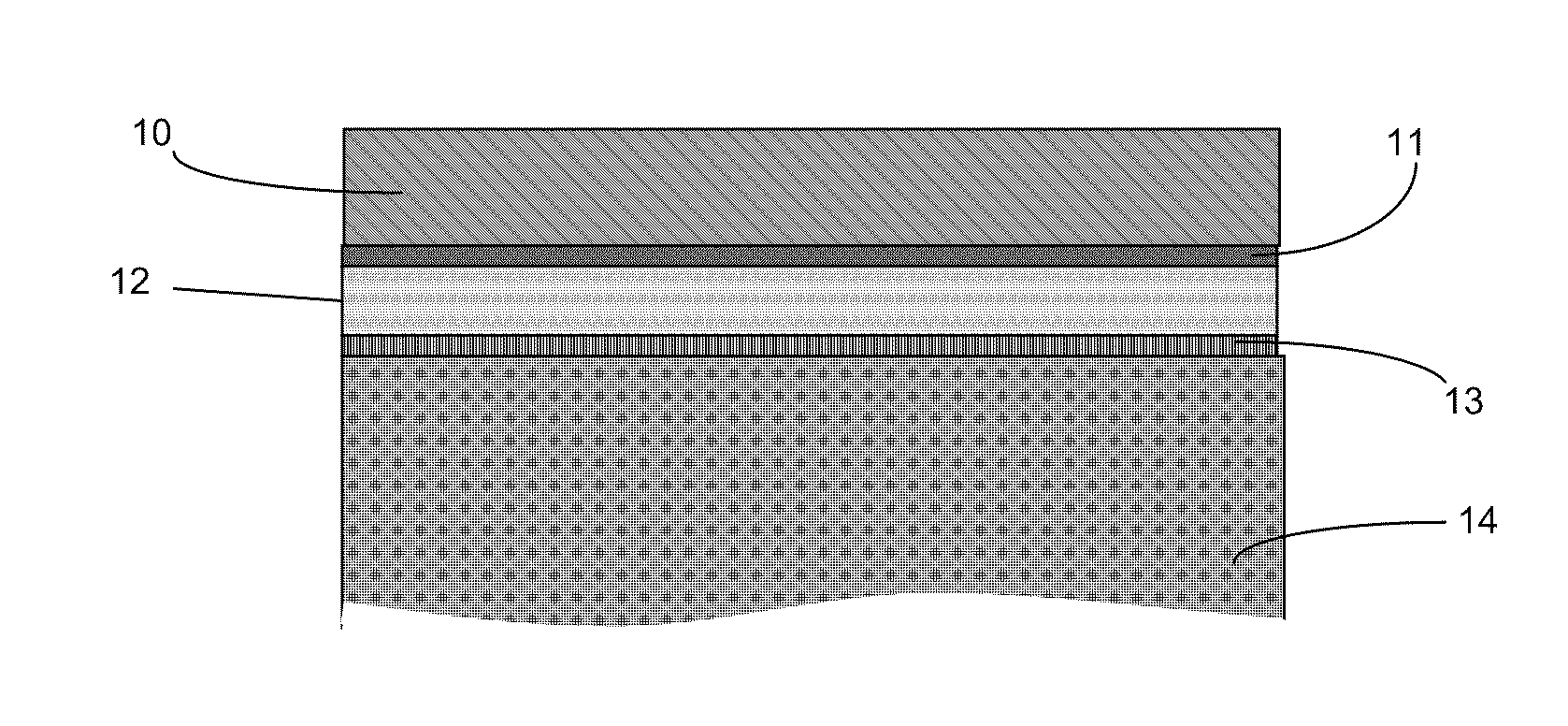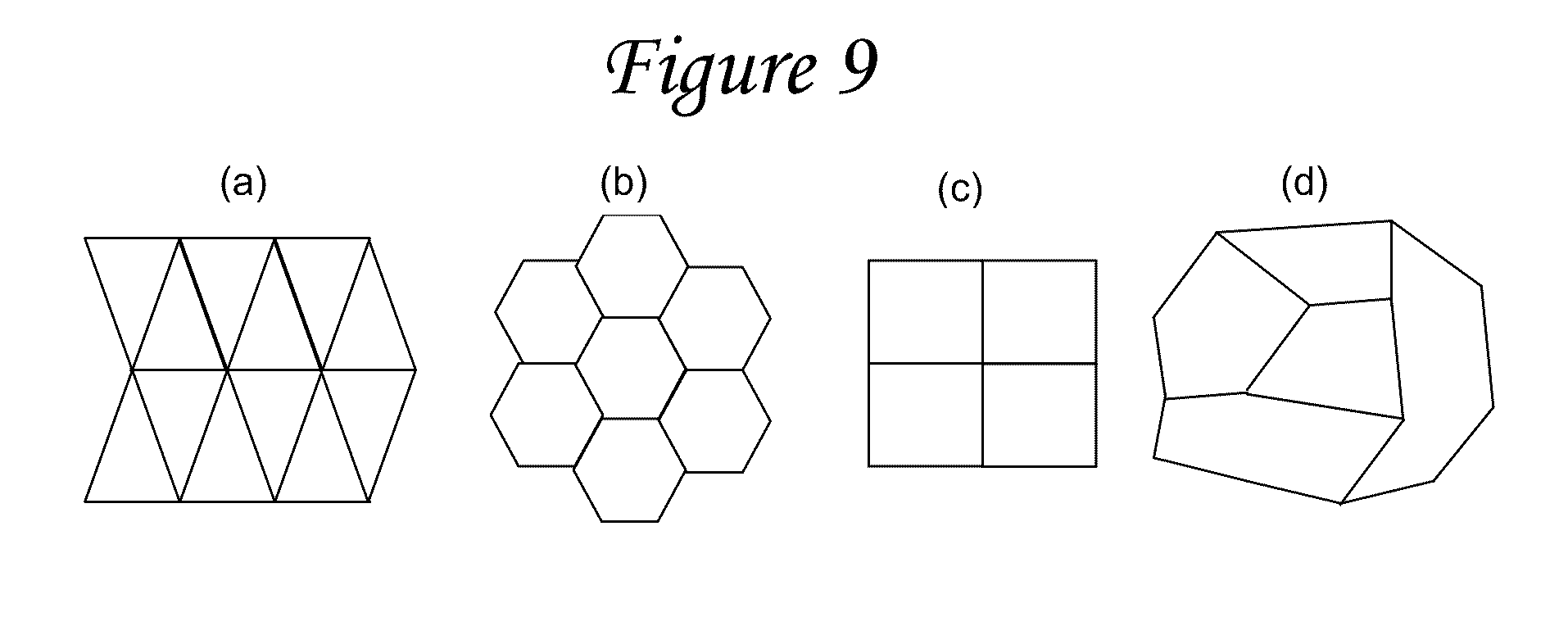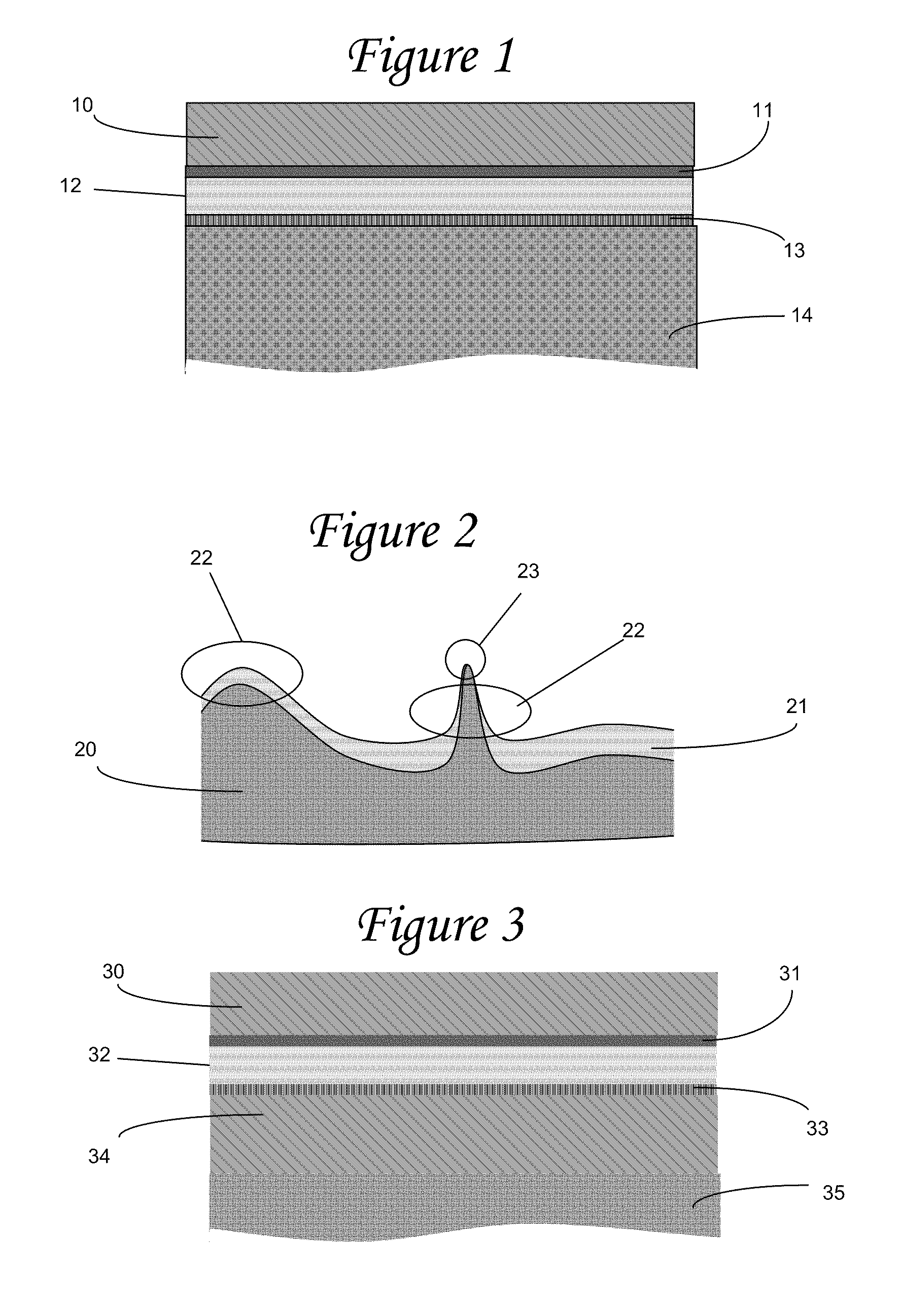Low-emissivity structures
- Summary
- Abstract
- Description
- Claims
- Application Information
AI Technical Summary
Benefits of technology
Problems solved by technology
Method used
Image
Examples
example 1
[0037]A polyethylene substrate 100″ wide was metallized with aluminum at 1500 ft / min. The substrate was plasma treated prior to the metallization with 10 KW of 80% / 20% Ar / O2 plasma using an inverted magnetron hollow cathode plasma reactor manufactured by Sigma Technologies. An aluminum layer with an optical density of OD=3.1 was deposited on the treated substrate and some of the metal was treated with 8 KW of O2 plasma and some was not. After the roll of film was removed from the vacuum chamber, the emissivity of the metal layer was ∈=0.035. There was no significant difference in emissivity values between sections of the metallized film that were oxygen-treated on the surface and sections that were not. The two metallized films were exposed to a temperature / humidity test at 40 C / 90RH for a period of 100 hrs. After the test the emissivity of the untreated metal was 0.15 and that of the oxygen plasma-treated metal was 0.06.
[0038]The corrosion resistance of aluminum is also a function ...
example 2
[0040]The effect of the thickness of the vacuum deposited functional polymer layer on the emissivity of the metallized aluminum was tested. A 60 / 20 / 20% mixture of glycol diacrylate / acid ester triacrylate / triazin triacrylate monomers was flash evaporated and electron-beam cross linked on a metallized PET film with an OD=3.5. Table 2 shows the emissivity values as a function of the polymer thickness.
TABLE 2Emissivity as a function of protective functional layer thicknessPolymer ThicknessEmissivity0.25 micron0.0350.30 micron0.0400.73 micron0.065
[0041]The flatness and smoothness of the substrate on which the metal layer is deposited can have a significant effect both on the initial emissivity values as well as the stability of the emissivity over the life of the product. FIG. 2 shows a schematic representation of a metallized layer 21 deposited on a substrate 20 that has various levels of surface micro-roughness. Surface features such as illustrated in areas 22 have lower-thickness meta...
example 3
[0046]The effect of pinhole reduction using protective and leveling polymer layers is shown in FIG. 4. BOPP stands for Biaxially Oriented Polypropylene, VDP for Vapor Deposited Polymer and Al for metallized aluminum. Biaxially oriented polypropylene film was metallized with aluminum with an optical density OD=2.5. The number of pinholes per unit area was measured with an optical microscope at 50× magnification. Some of the film was coated with a 0.25-micron leveling polymer layer of a cross-linked hexane diol diacrylate monomer deposited prior to the metal deposition. Some of the film also had a 0.25-microns of protective polymer after the metal deposition. FIG. 4 shows the pinhole count under different conditions. Although the undercoat had a significant effect (BOPP / VDP / Al) in the pinhole reduction, the protective functional coating had a larger effect (BOPP / Al / VDP). This suggests that that many of the pinholes are generated by abrasion of the thin aluminum from the top of the var...
PUM
| Property | Measurement | Unit |
|---|---|---|
| Length | aaaaa | aaaaa |
| Nanoscale particle size | aaaaa | aaaaa |
| Nanoscale particle size | aaaaa | aaaaa |
Abstract
Description
Claims
Application Information
 Login to View More
Login to View More - R&D
- Intellectual Property
- Life Sciences
- Materials
- Tech Scout
- Unparalleled Data Quality
- Higher Quality Content
- 60% Fewer Hallucinations
Browse by: Latest US Patents, China's latest patents, Technical Efficacy Thesaurus, Application Domain, Technology Topic, Popular Technical Reports.
© 2025 PatSnap. All rights reserved.Legal|Privacy policy|Modern Slavery Act Transparency Statement|Sitemap|About US| Contact US: help@patsnap.com



